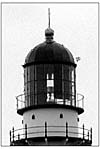Making Selections
- The Selection Tools
- The Selection Menu
- Selecting Large Areas
- Cutting and Copying
- Cropping
- Summary
- Workshop
What You'll Learn in This Hour:
- The Selection Tools
- The Selection Menu
- Selecting Large Areas
- Cutting and Copying
- Cropping
Now you're making progress. You've learned how to bring images in and out of Photoshop. The next step is learning to work with images and edit them. To do this, you have to select a part of the picture on which you want to work. Selections are just what they seem to be—portions of the image that you have selected.
The Selection Tools
There are several ways to select a piece of a picture. You can use any of the Selection tools: Marquee tools, Lasso tools, or the Magic Wand. You have different kinds of Selection tools because you sometimes need to make selections in a particular way, such as punching a shape out of an image or selecting all of the sky. Photoshop’s Selection tools give you the power to select the whole picture or a single pixel. Just to refresh your memory, Figure 3.1 shows the Selection tools. (The pop-up menus have been shifted so that you can see what’s on them.) In the lower-right corner, you can also see the Slice tool, which is used for Web animation. You’ll learn all about it in Hour 24, "Photoshop for the Web."

Figure 3.1 The Selection tools are located at the top of the toolbox.
Rectangular and Elliptical Marquees
The Marquee tools, both Rectangular and Elliptical, are found in the upper-left corner of the toolbox. To select the Rectangular Marquee, just click it or press the letter M on your keyboard. To select the Elliptical Marquee, click and hold the Rectangular Marquee in the toolbox. When the pop-up menu appears, choose the Elliptical Marquee. Use this method to choose the Single Row or Single Column Marquee, too.
Assuming that the Rectangular Marquee is the currently selected tool, you can also press Shift+M to switch back and forth between the two. The Elliptical Marquee tool works the same way as the Rectangular Marquee tool. The icon will change accordingly on the Tool Options bar.
To experiment with its many uses, first create a new file (go back to Hour 1, "The Basics," if you can’t remember how). Again, give yourself some room to work. Set the dimensions to the Photoshop default.
Click the Marquee tool in the toolbox.
While the cursor is over the canvas, click and hold the mouse button, and then drag out a marquee.
As you move the tool over the canvas, the cursor appears as a crosshair.
Experiment with dragging out an elliptical marquee. Try to get a sense for how marquees appear. Try dragging from different directions.
If you press and hold the Shift key after you’ve made your first selection and before you click again, you can make additional selections. Take care to continue holding the Shift key while making additional selections. (You’ll see a plus sign beneath the crosshair.) Where the selected areas overlap, they’ll merge to form one larger selected shape. Figure 3.2 shows both single marquee shapes and a combination of shapes making a selection somewhat resembling a gazebo.
To draw a perfectly square box or round circle, choose Fixed Aspect Ratio from the Style pop-up menu on the Tool Options bar and enter 1 and 1 in the width and height fields, or just press the Shift key as you drag the shape. Use Fixed Size to make multiple selections that are the same size.

Figure 3.2 You can also combine square and round selections.
To deselect an area inside another area (making what graphics artists call a knockout), press Option (Mac) or Alt (Windows) as you drag the inner shape. (You’ll see a minus sign beneath the crosshair.) For instance, if you have a circle selected and drag another smaller circle inside it while pressing Option (Mac) or Alt (Windows), the selected shape is a donut.
The thin, horizontal (Single Row) and vertical (Single Column) marquees select a single row of pixels, either horizontally or vertically. They are often useful for cleaning up the edges of an object.
When you are dealing with selections, it is important to remember that, for good or bad, only the area within the confines of the marquee can be edited. It is the only active area of the canvas. Thus, after a selection is made, you can perform whatever action you want, but before you move on, the selection must be turned off, or deselected, by clicking outside the selected area with one of the Marquee tools or by pressing Command+D (Mac) or Control+D (Windows). Until you do so, you can only edit within the selection’s boundaries. On the other hand, this restriction on editing can be extremely helpful if you need to draw a complex filled shape. Assemble the shape from multiple selections, as I have in Figure 3.2. Then you can pour paint into it, apply a gradient to it, or use the paintbrush with no fear of coloring outside the lines. You can even use the selection to erase a piece of the picture. If I filled the page with color or with an image and selected a shape from within it, I could easily remove the active selected piece by pressing the Backspace/Delete key.
Lasso
As useful as the Marquee tools and their modifier keys are, there will come times when you have to select irregular shapes. Perhaps you might need to select a single flower from a bunch or, as in Figure 3.3, remove the kitten from the table.

Figure 3.3 Selecting an object with the Lasso.
Using the primary Lasso tool to select an object in this way requires a steady hand and good hand-eye coordination, as well as a clean mouse and mousepad or trackball. As with the Marquee tools, you can add to your lassoed selection by holding the Shift key and selecting additional parts of the object.
The Polygonal Lasso Tool
The Polygonal Lasso tool behaves in much the same way as the regular Lasso tool. The difference is, as its name implies, it makes irregular straight-edged selections. It’s actually easier to use when you need to make detailed selections because it can be controlled more easily. Instead of simply dragging a marquee line, as you do with the regular Lasso, you click the Polygonal Lasso to place points, and Photoshop inserts a straight-line marquee between the points. You can place as many points as you need, as close together or as far apart as necessary. Figure 3.4 shows the tool in use.

Figure 3.4 The Polygonal Lasso tool.
The Magnetic Lasso
The Magnetic Lasso is one of my most-used tools. As you drag it around any shape with a reasonably well-defined edge, it snaps to the edge. Select it and use it just as you did the Polygonal Lasso. Because it finds edges by looking for differences in contrast, the Magnetic Lasso is most effective on irregular objects that stand out from the background. You can use the Tool Options bar to set the parameters. Width refers to how close to the edge you must be to have the Lasso recognize it (see Figure 3.5). Edge contrast determines how different the pixels must be in brightness value for the Lasso to recognize them. Frequency determines how often the Lasso sets its anchor points. (Anchor points are the points indicated by boxes on a line. Drag them to adjust the line.)
Magic Wand
The software designers at Adobe Systems must not have been able to come up with a more descriptive name for this fantastic tool, choosing instead to let it, perhaps, speak for itself—the Magic Wand. Maybe it’s better that way.

Figure 3.5 Set the Edge Contrast value according to the amount contrast between the intended selection and what surrounds it.
The Magic Wand is a different kind of Selection tool. So far, we’ve looked at tools that select pixels based on their placement in the bitmap (the picture). The Magic Wand selects pixels somewhat differently; it selects them based on color values. This enables you to cut foreground objects, such as the lighthouse, out of the background. You might need to combine several selections by holding the Shift key, as done in Figure 3.6, to select the entire object.
As with the previously described tools, the Magic Wand can make and merge selections if you press the Shift key as you click the areas to select.
The Magic Wand selects adjacent pixels based on color similarities. Its tolerance can be set in the Tool Options bar. Tolerance, in this instance, refers to the Magic Wand’s sensitivity to color differences.
The rule is easy to remember: The lower the Tolerance setting, the less tolerance the Magic Wand has for color differences. Thus, for example, if you set the Tolerance higher (it ranges from 0 to 255), it selects all variations of the color that you initially select.
Settings on the Tool Options bar allow you to select everything in the picture that matches the selected color or select only pixels that touch each other. If, for example, you have a picture with several yellow flowers and your Tolerance setting is high, you’ll select as much and as many of the flowers as fits the tolerance. If you check Contiguous in the Tools Options bar, you’ll select only the parts of the flower you click on that are within the tolerance and have pixels that touch each other. In Figure 3.7, I’ve set the tolerance to 32, and clicked once on each screen. The screen on the right had Contiguous selected. The one on the left did not.

Figure 3.6 Selections being made with the Magic Wand.

Figure 3.7 Selecting noncontiguous pixels can save you a lot of time.
The Magic Wand is best used for selecting objects that are primarily one color, such as the flower. It’s ideal when you need to select the sky in a landscape. In a few minutes, you’ll see exactly how to do this, but first, there are some other selection tricks to learn.